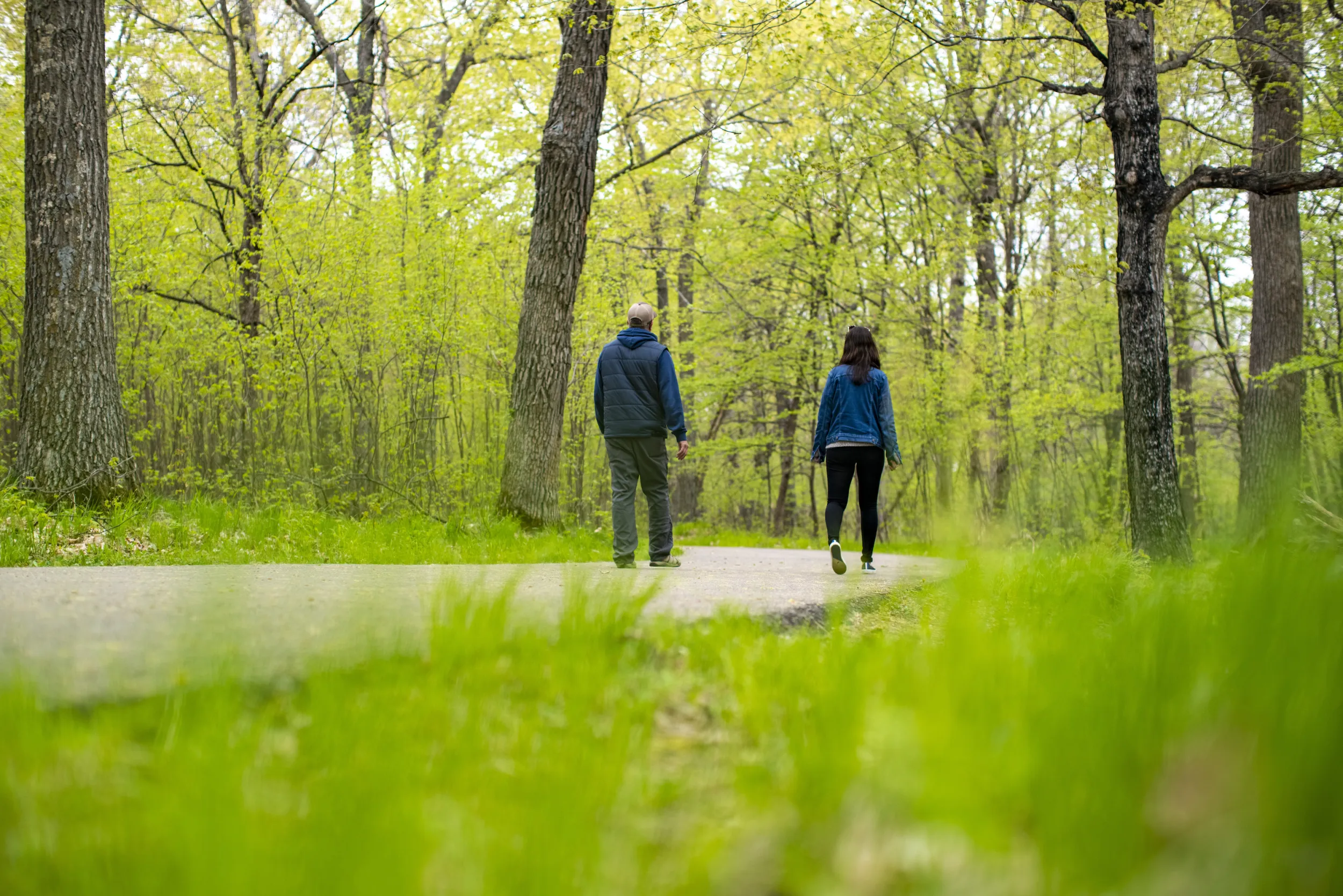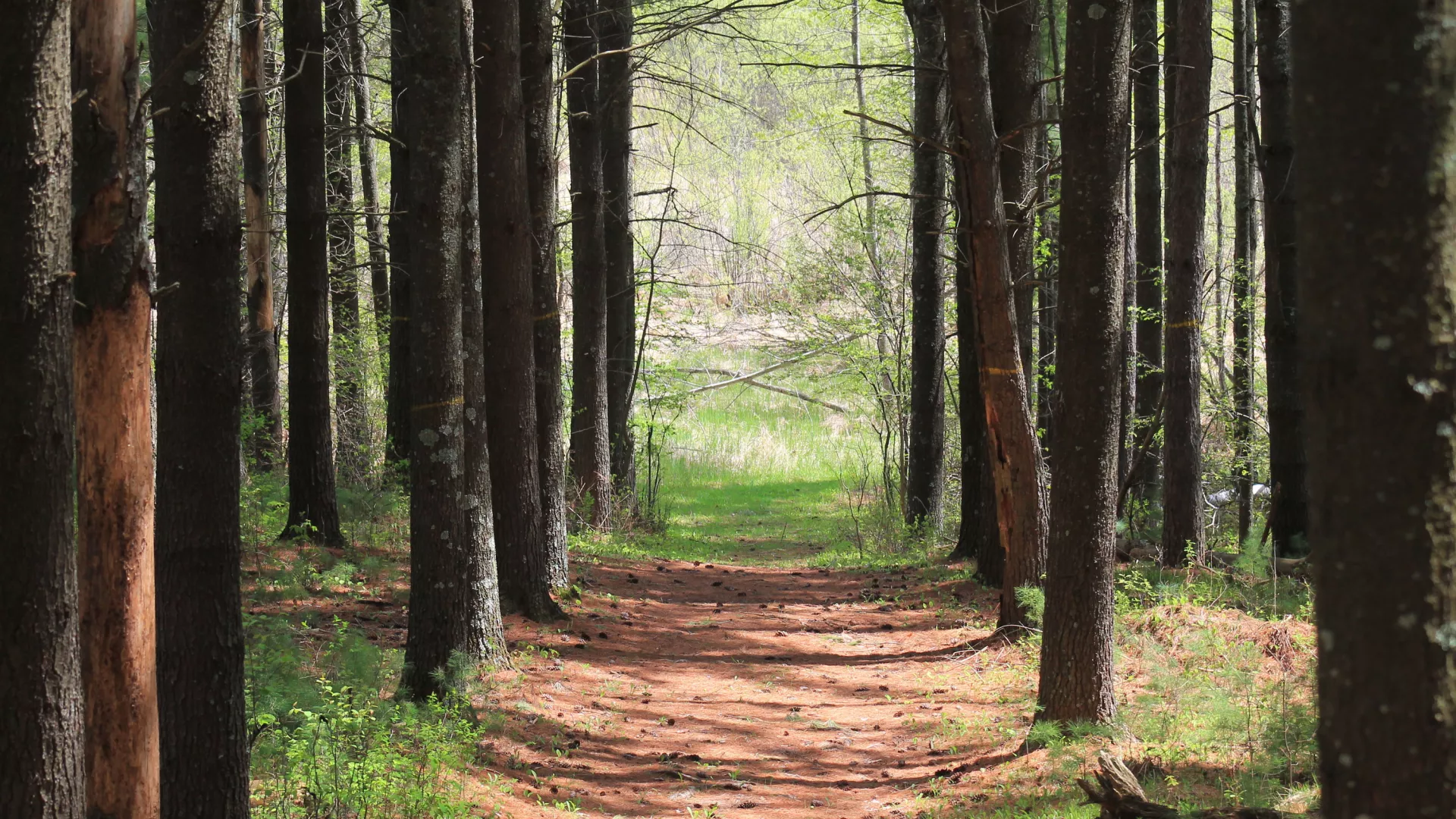
- Home
- Wellness
Why Minnesota is the Perfect Place for Forest Bathing
Shinrin-Yoku is a Japanese mindfulness activity that translates to “taking in the forest atmosphere” or “forest bathing.” It was developed in the 1980s to help relieve stress and improve physical and mental health—and scientific research shows it’s doing just that.
Proven benefits of forest bathing include lowered blood pressure, improved immune function and lowered cortisol—our body’s long-term stress hormone that contributes to diabetes and heart disease.
Don’t be fooled by its name, though: You don’t need soap and water for this type of bathing. Instead, your senses will bathe, figuratively speaking, in all that a mindful nature walk has to offer: hearing the ruffled feathers of a loon in the distance, spying the wing flutters of a late-season Monarch, or picking up the scent of a balsam fir. Move slowly, with intention, and luxuriate in a bath of the myriad sights, sounds and smells of the forest. It can be done in any kind of weather, as long as you’re dressed to remain comfortable.
Being guided through your first Shinrin-Yoku walk is ideal, but of course you don’t always need a guide to have a mindful experience in the woods. Here are Brandt’s top five tips for guiding your own forest bathing experience:
- Carve out a set amount of time.
- Have no agenda except to notice everything: listen, smell, feel, be quiet.
- Unplug. Turn off your phone and any other electronics.
- Make sure you're comfortable. Check the weather and dress for it.
- Bring something to drink and snack on.
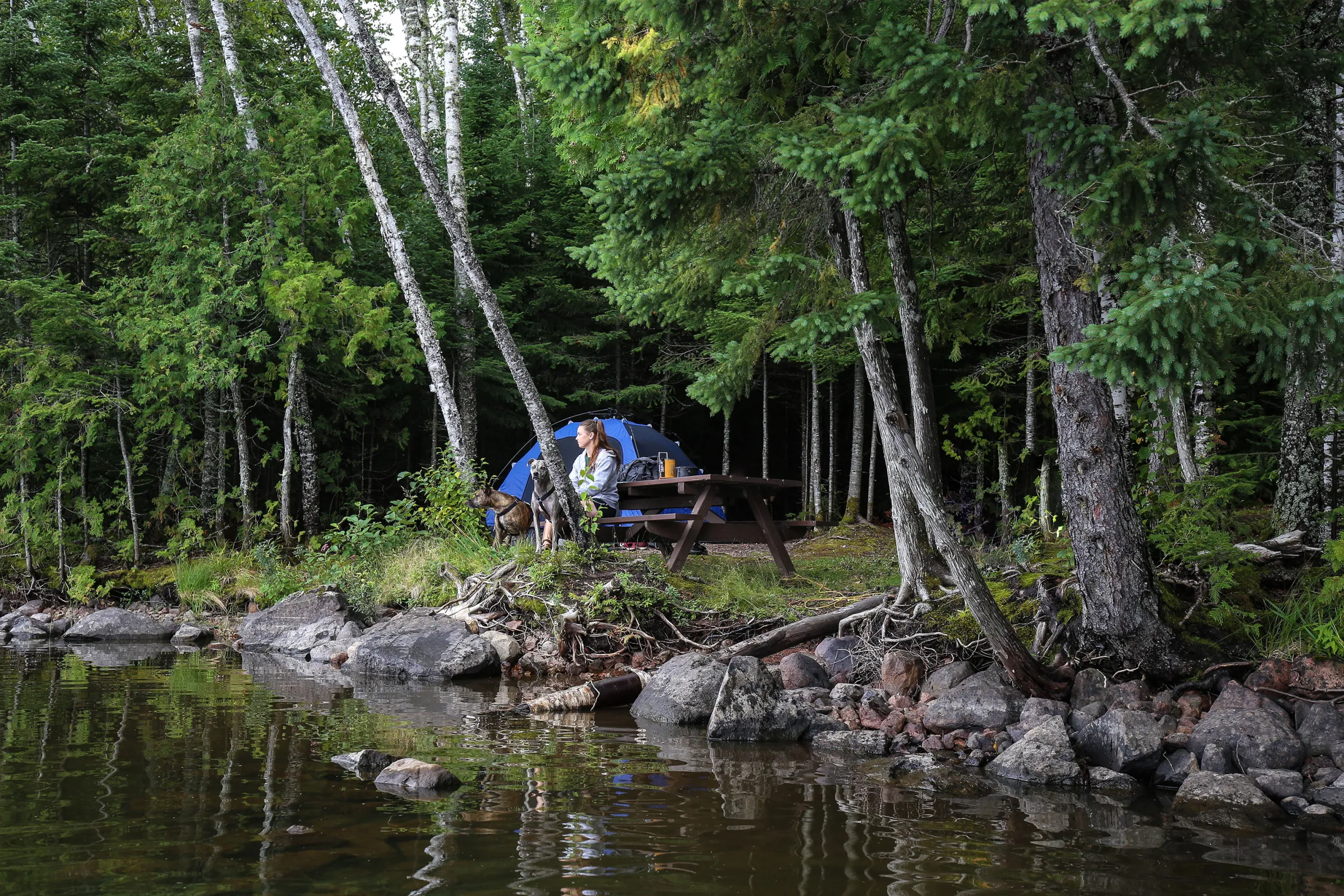
How Forest Bathing Encourages Natural Healing
Minnesota offers forest bathers endless opportunities to reset and experience healing in nature. Just over a third of Minnesota’s land area is classified as forest land, including many of our 67 state parks, and the state’s three forest biomes and four distinct ecosystems leave forest bathers no shortage of options.
Still, I was skeptical at first. I consider myself a nature girl. What could a forest therapy guide provide that I couldn’t just do on my own?
“We are such a fast culture right now. It’s hard to carve out time,” says Brandt, who is based in Marine on St. Croix. “A guide is trained to give specific invitations, to get you out of your thinking brain and into your body and into your senses. You can smell the fragrances, you can feel the breeze or moisture on your skin. You can even taste. You are guided to be in the present moment.”
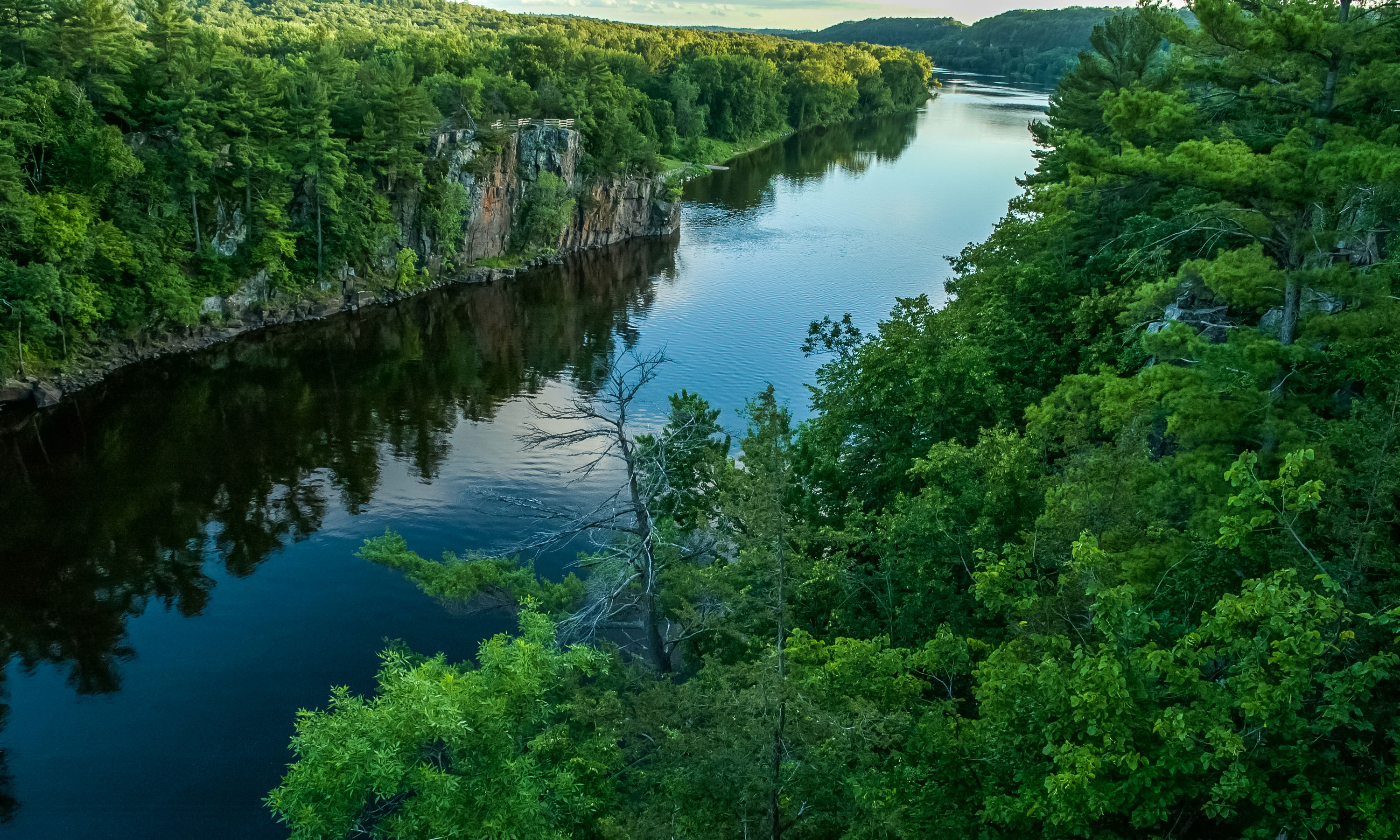
Knowing the area intimately allows Brandt to guide forest bathers toward the calls of sandhill cranes or trumpeter swans, the spicy scent of fallen leaves in autumn, and the reflection of white pines, birch, oak and basswood trees mirrored in the St. Croix River.
During my own experience, Brandt tells us to open our closed eyes slowly, as if waking for the first time today. The dappled light, shining through a canopy of leaves above, dots the grass, striking me with its beautiful simplicity. My breath slows. Had I been on a fast-moving hike, I never would have embraced the stillness required to notice such detail.
Forest bathing walks move slowly for exactly this reason. Most walks last anywhere from one to three hours and end with a tea ceremony using herbs or leaves found right then and there. Guides are trained to identify and safely choose these items, such as dandelion, found almost everywhere in Minnesota.
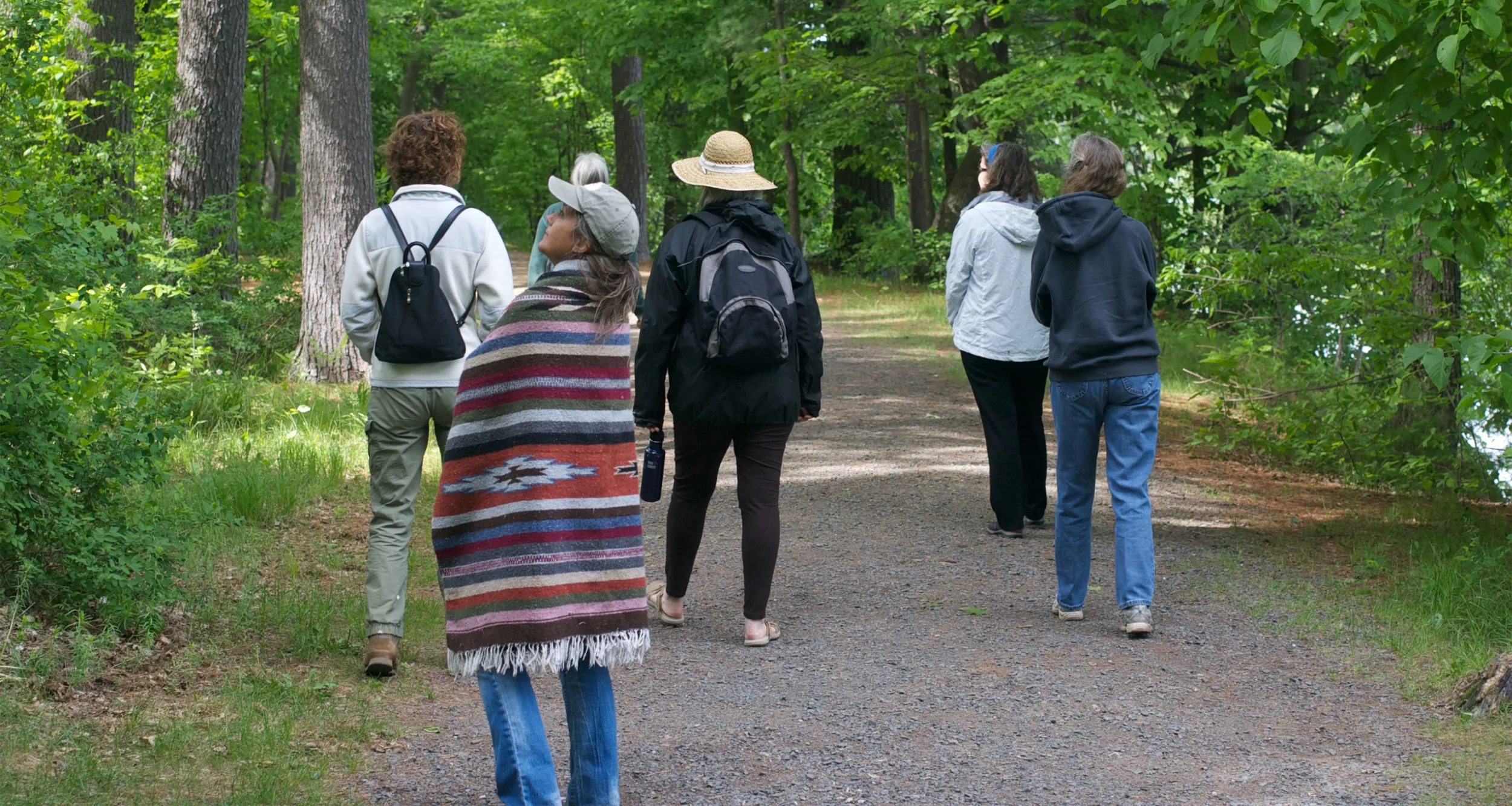
Where to Forest Bathe
While forest bathing can be done in virtually any natural setting, some Minnesota parks and nature centers offer it as part of their scheduled programming.
According to the Association of Nature and Forest Therapy Guides and Programs, some of the top places for forest bathing in Minnesota include:
- Interstate State Park
- Glendalough State Park
- Forestville State Park
- Chippewa National Forest
- Buffalo River State Park
Look for upcoming programs at the Minnesota Landscape Arboretum in Chaska or the Eloise Butler Wildflower Garden in Minneapolis, or book a private forest bathing session from The Association of Nature and Forest Therapy Guides and Programs.
